A few years ago I had the chance to speak at Carnegie Mellon
in Pittsburgh.
My good friend Chris Klug, a teacher at CMU (
and a great photographer) invited me speak and left it up to me to decide what I wanted to
speak about and also conduct a small workshop.
I was going to be working with both artists, programmers and designers in my workshop. The challenge for me was that not everyone in the
class would have an artistic background, or even draw. I decided that I would talk about the
potential benefits of process and how it might impact your final results. The question I posed and hoped to answer (it
was bit of an experiment) was this:
How does process affect your
final results?
Because of my time as in art director in the video game industry, I had thought about this often. How do I get a team of 30 on-site artists, and 200 or so more in India or China via outsourcing, work in a way that it appears that one hand created all the art for a game? Not and easy task. Defining a set process for various jobs becomes not just useful to the individual artists, but critical to budget, schedule and the success of the game.
For the lecture, I went though one of my paintings and
showed the steps of creation, and then spoke about the process used by
Bouguereau and Rockwell (and Dali, Cornwell, Leyedecker, Wyeth, Pyle, Bama,
Lovell…).
For my workshop, I had them paint a formal portrait of a monster, or something monster-ish, in one hour. Everyone had to follow the exact same steps though.
1: Thumbnail sketch
2: Build a clay model
3: Light and photograph the model
4: Digital paint over the model
Like this:
The results were definitely informative. Many of those who attended were surprised at the results that they were able to achieve in such a short amount of time. None of the paintings, including mine, were book cover worthy. Of course not, they were really just sketches still, but the key point was to see how the process could change the outcome. For some in the workshop, the progress was amazing.
My son Alex loves to draw. At 9, his drawings looked like typical 9 year old drawings. Mostly stick figures of soldiers with flamethrowers or knights battling dragons. What if he followed a specific process for creating a self portrait. In this case the process was this:
1: Take self portrait photo
2: Grid off the photo
3: Draw the same scale grid on drawing paper
4: Draw your portrait using the grid as a guide
Here is what my 9 year old drew in his art class:
Not too shabby kiddo! Especially at 9. It certainly surprised him! It gave him a whole new level of confidence. He started to see himself as an Artist! He didn’t suddenly become better over night, graduating from stick figures to rendered faces. All that changed was his process. He applied tools and resources to his work that helped him see better results.
What is your process? How do you go from idea to finished product? How can you improve your process? I know some artists that like to sketch small and then scan in, or enlarge on a photocopier and draw over those. They feel it helps preserve the life of their little gestures. It has become an important step in their process. Write down your steps. Spend a little time thinking things through. Are there points in your process that are repeatedly stumbling blocks (maybe your reference is sub-par or you don’t take enough time to determine your color palette before starting…)
There are a lot of different ways to approach a painting, and as many techniques as there are artists, but I think it is useful to look at a specific approach to picture making. It was nearly abandoned through much 20th century, kept alive by a few fine artists and of course the great illustrators. It was used from the early Renaissance and is seeing a renewal again today.
Here are the steps:
1: Thumbnail sketches
2: Detailed sketch
3: Studies from life (or photography)
4: Value/color sketch
5: Study of head/hands/feet/fabric/difficult passages
6: Full sized cartoon
7: Final painting
Phew! That is a lot of work. I have resisted this for a long time. How in the world could I put in that much work for one painting. If you ever find yourself wishing that you could paint as well as Rockwell or Bouguereau (I do all the time) then we should probably start with the process they used, or at least take a close look. Heck, if they were that good and they still felt that all those steps were necessary… maybe there is something there.
Here are some shots of the different steps from Bouguereau’s Nymphs and Satyr and Rockwell’s Art Critic:
1: Thumbnail sketches – Rockwell’s definitely has a lot of personality already and is a little more resolved than Bouguereau’s sketches. Bouguereau was originally planning a horizontal piece if the sketches here are any indication.
2: Detailed sketch – Be sure to take a good look at that photo of Rockwell at work on the painting. Look at all the work that has gone into this piece before he set brush to final canvas. Astounding! I count 18 different head studies. I find myself in awe of his work ethic. Bouguereau as well, he as just getting started!
3: Studies from life/photography – Both of art artists are no longer drawing from their head, but using solid reference here. Rockwell searching for the right model and face (he ended up using his wife on the left as the final model) and Bouguereau drawing from models posing in his studio.
4: Value/color sketch – I don’t have the color/value sketch that Rockwell did for this painting, but if you look at the photo of him in his studio in step 2, you can see it towards the left side, above all the head studies. For Bouguereau, I am including the sketch for Nymphs and Satyr, as well as the study for another painting so you can see one in color.
5: Study of head/hands/feet/fabric/difficult passages – Included here are studies for three paintings from Bouguereau that show the lengths he went to to get it right. Almost as if rehearsing lines, so that for the final performance, there would be little or no stumbling. The first and third images aren’t for Nymphs and Satyr, but give you an idea of what he was up to. Rockwell’s studies are a lot looser than Bouguereau’s, but still very informative. Rockwell would sometimes have his photographer shoot his drawings and then he would paint right over them to quickly get his colors in.
6: Full-sized cartoon – Two beautiful drawings, done at the same size as the final and ready to be transferred to canvas. You can see that both of the cartoons have significant differences from the final paintings though. They were clearly still working things out in the final, making changes and adjustments to poses or elements of the composition.
7: The Final Painting – Wow! Well done Mr. Bouguereau and Mr. Rockwell. All that hard work definitely paid off! I am inspired and tired.
Is all that work worth it? Can we benefit from this in our busy hectic day and time and we use modern technology to help us go through some of these steps? I would like to think so. Check back in a couple weeks for part 2 and I will show you how I have used some modern tools applied to the steps listed above.
In the comments, I would love to hear your input on your own process. Are there steps that you find critical towards your success? Maybe you don’t have a set process, but work each piece on it’s own, re-inventing the wheel of sorts? Let me know.
* Update – Part 2 can be found here


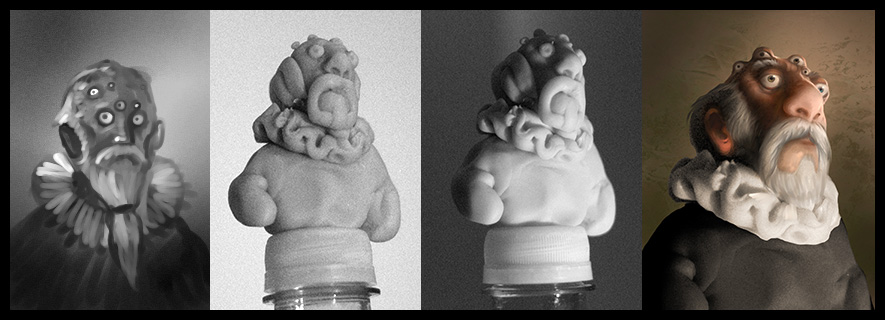
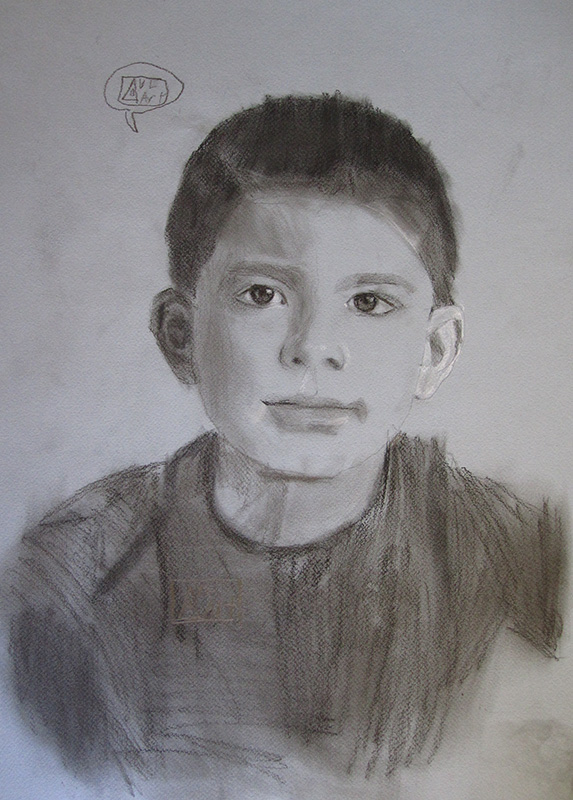
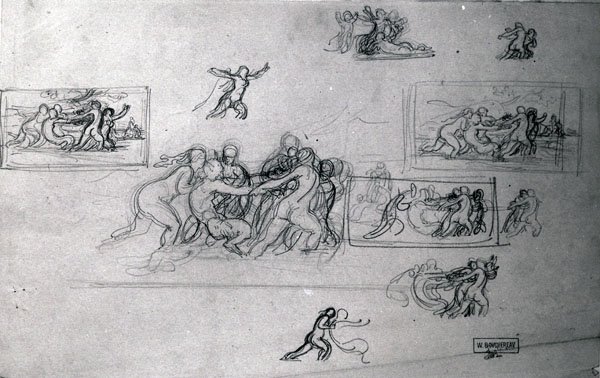
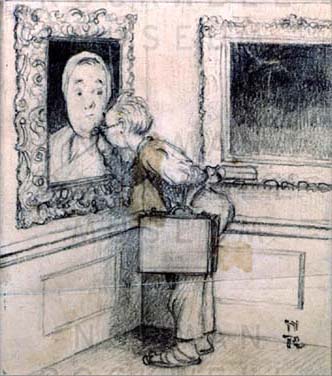


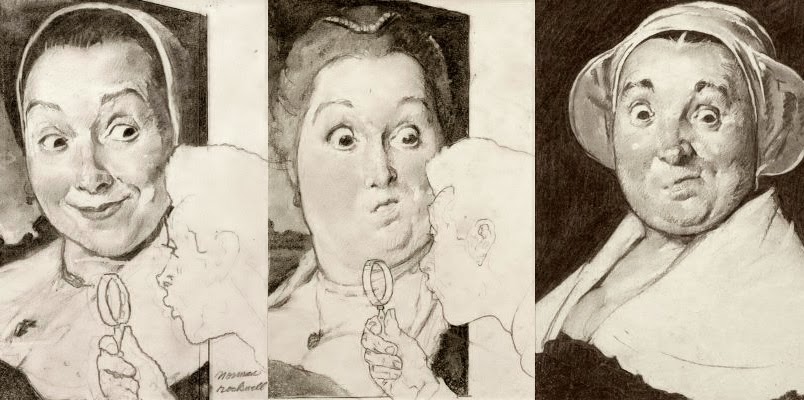
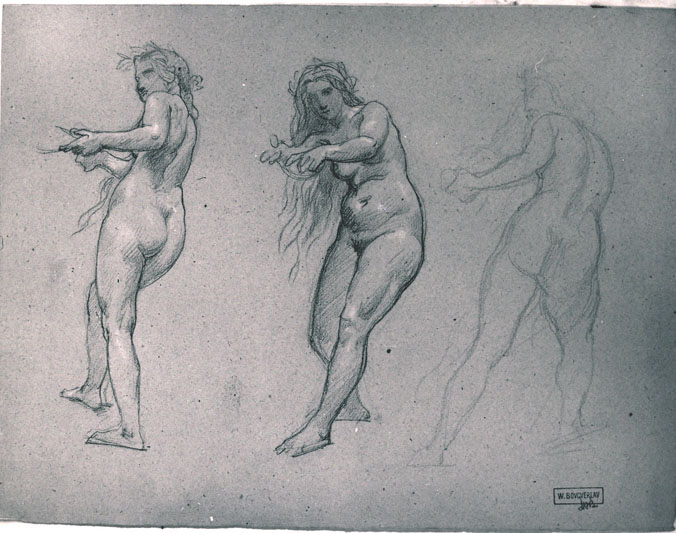
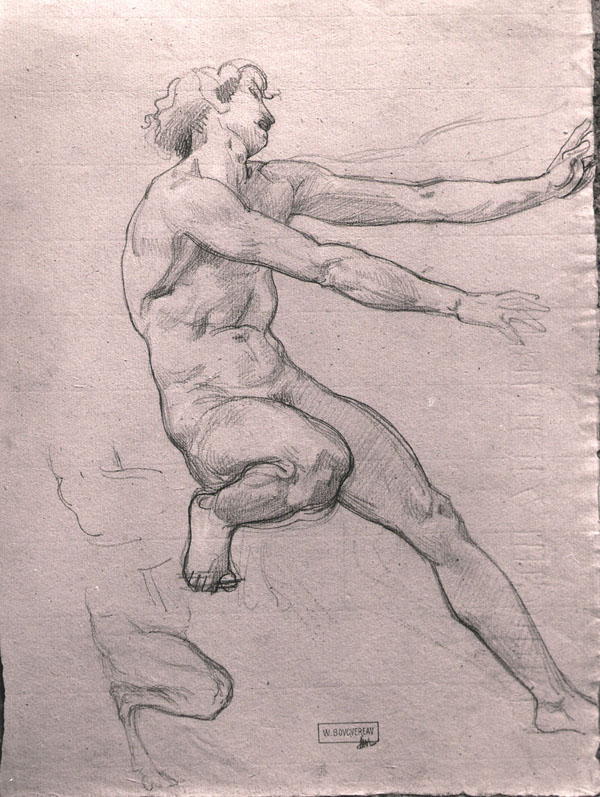
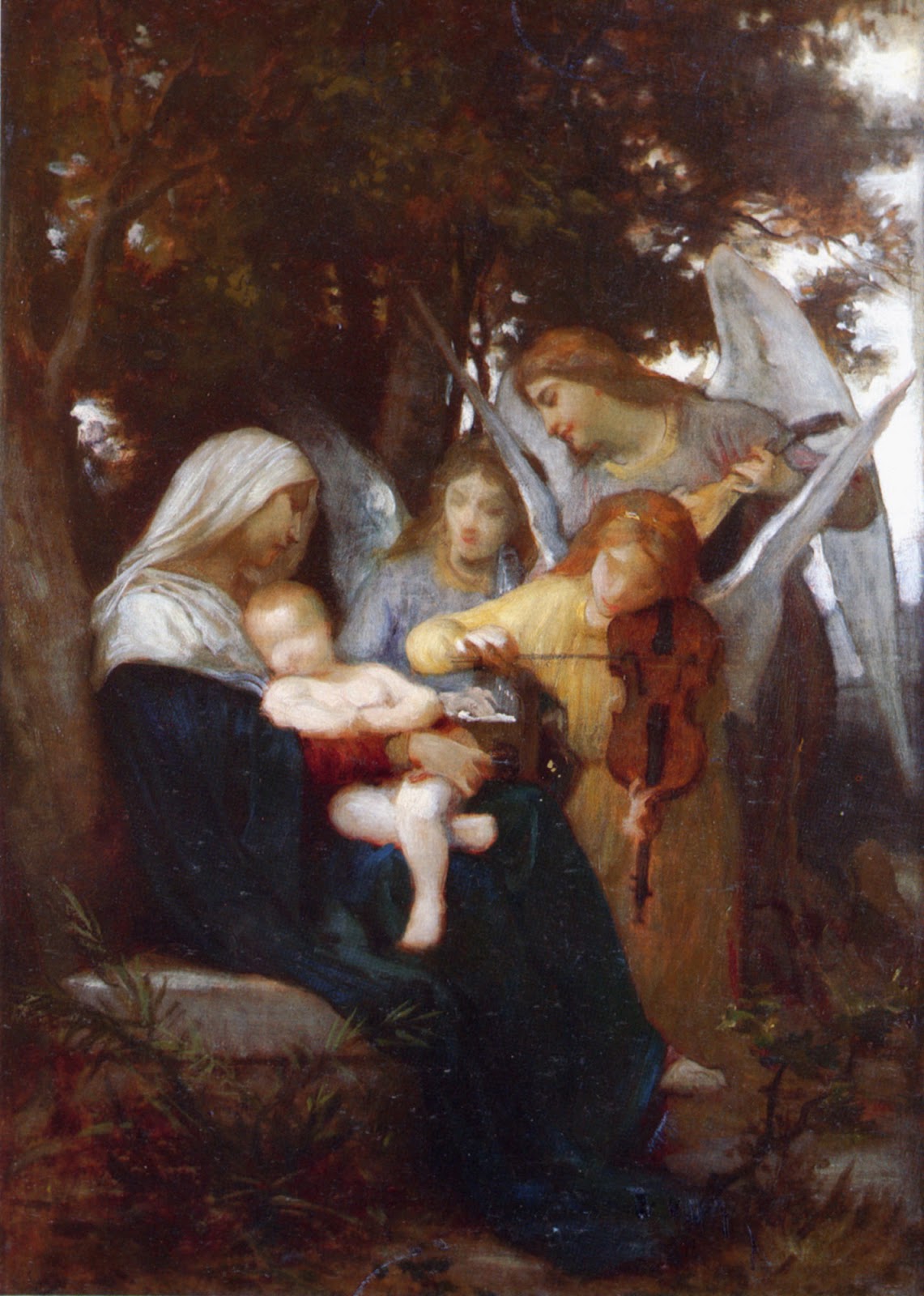

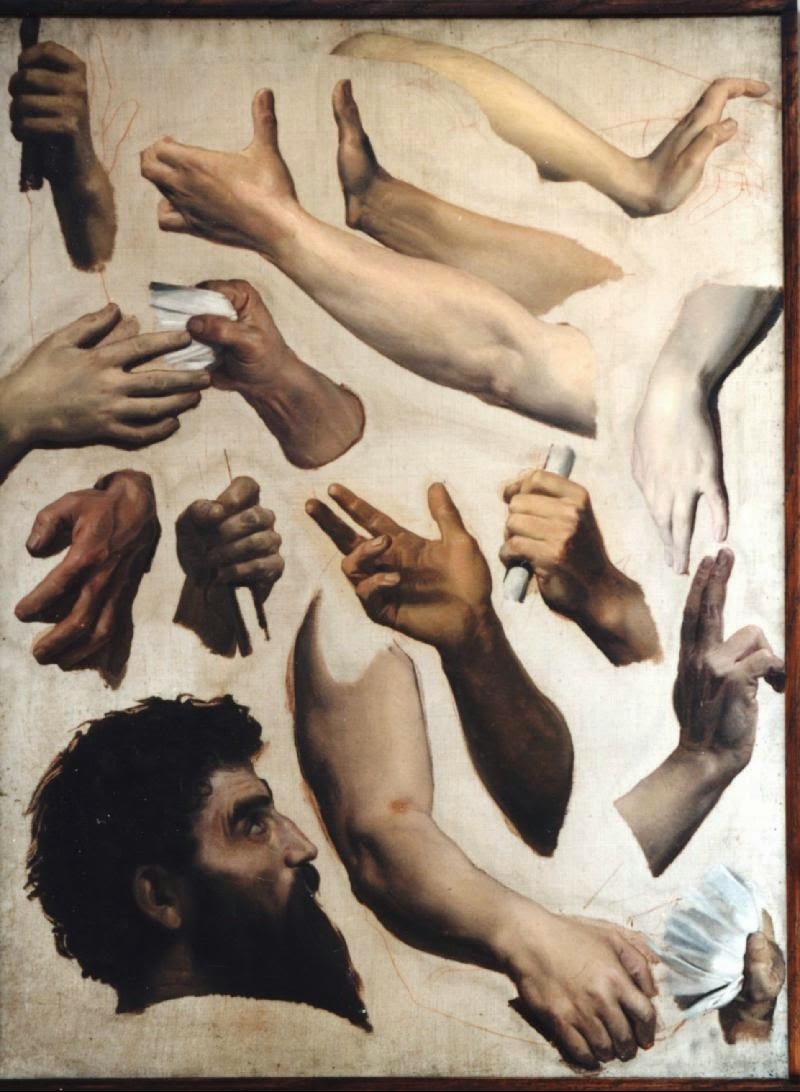
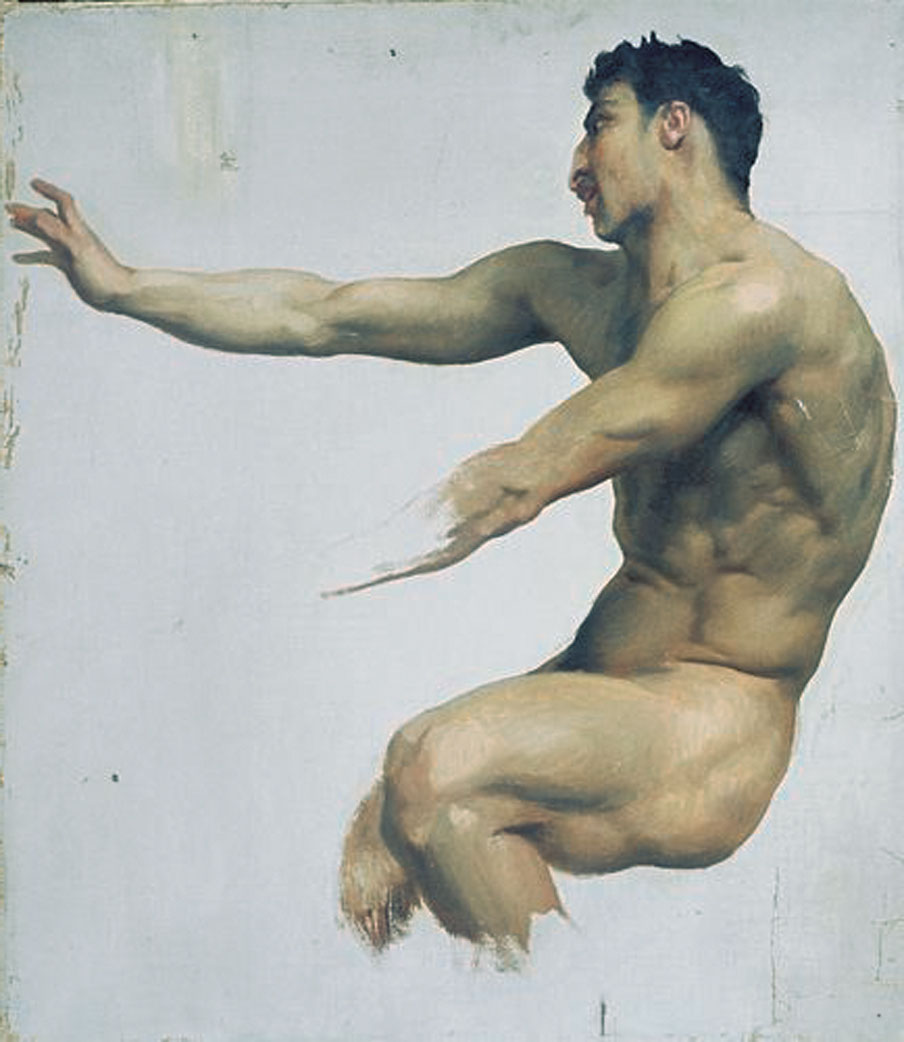

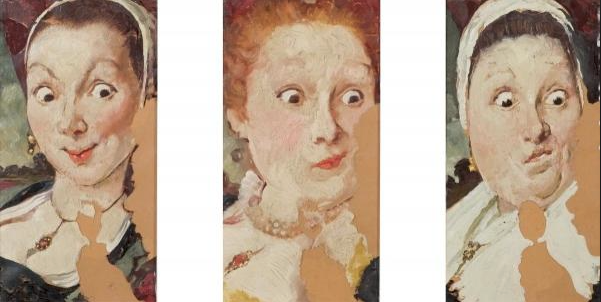
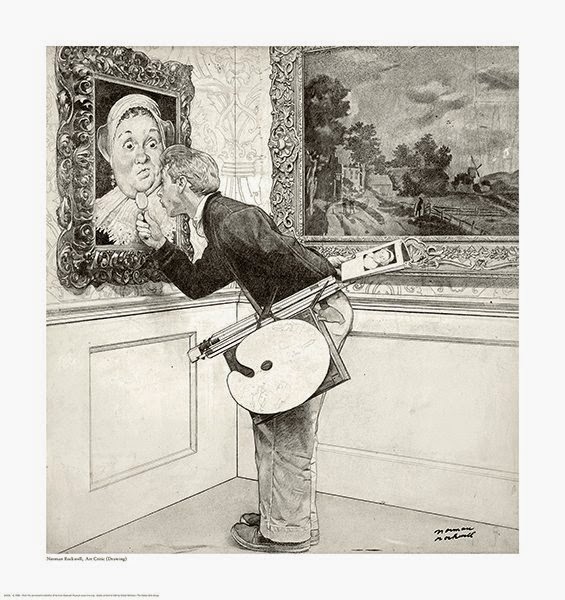
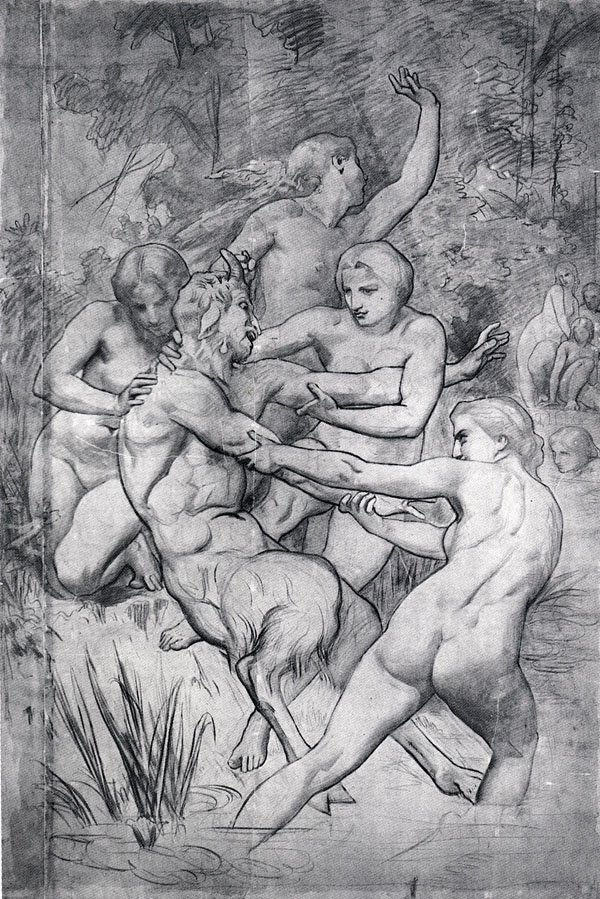

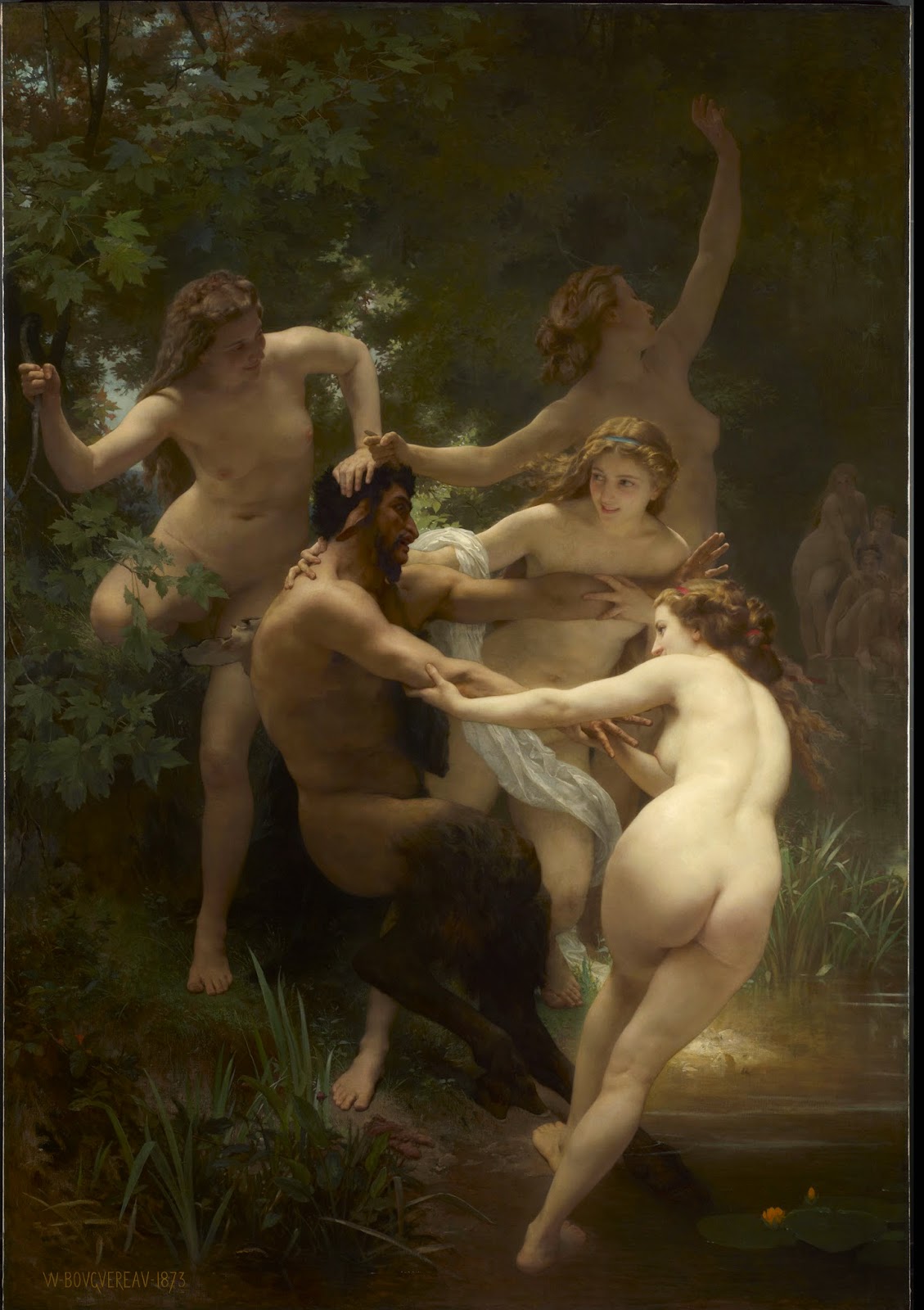

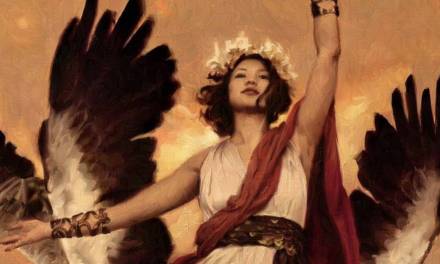
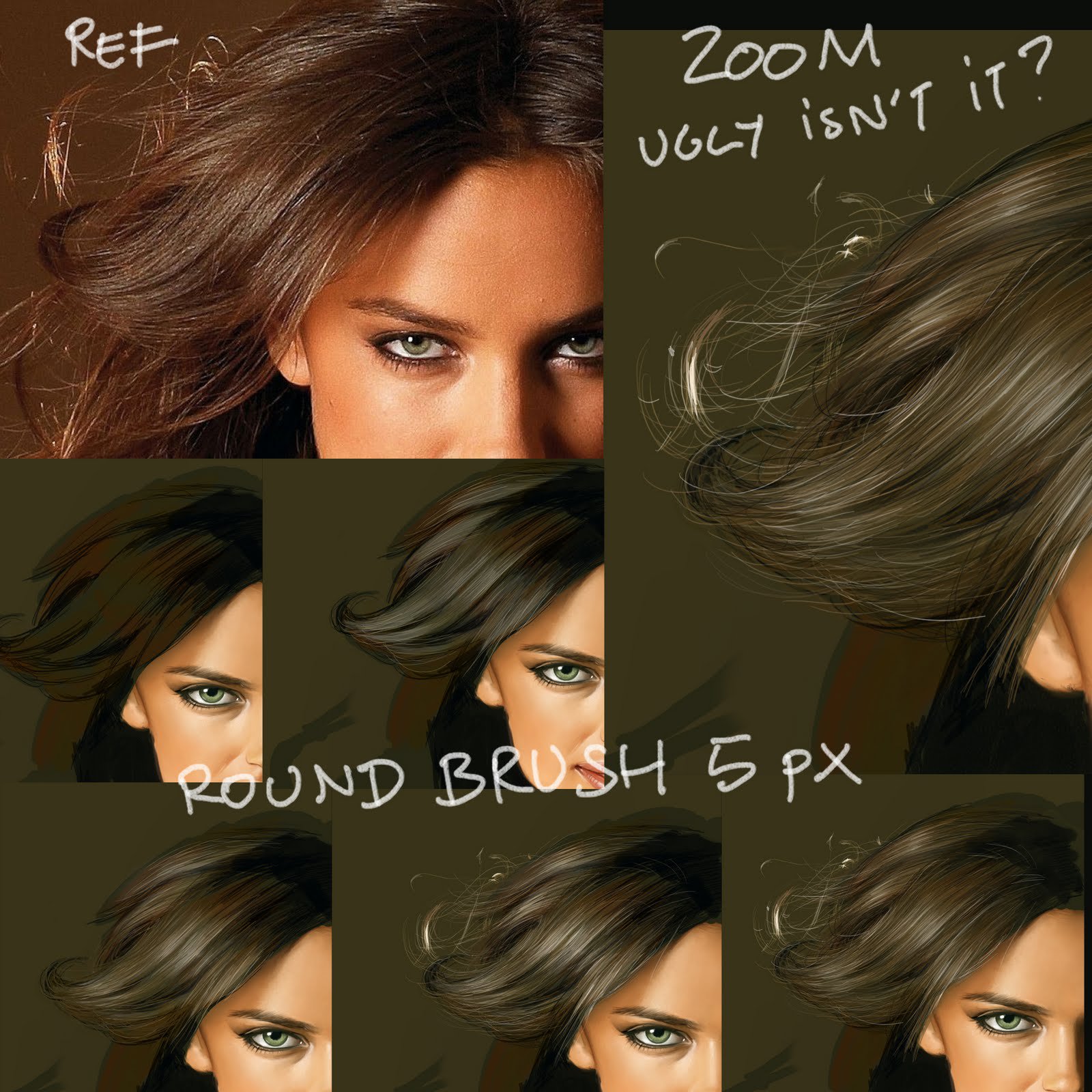
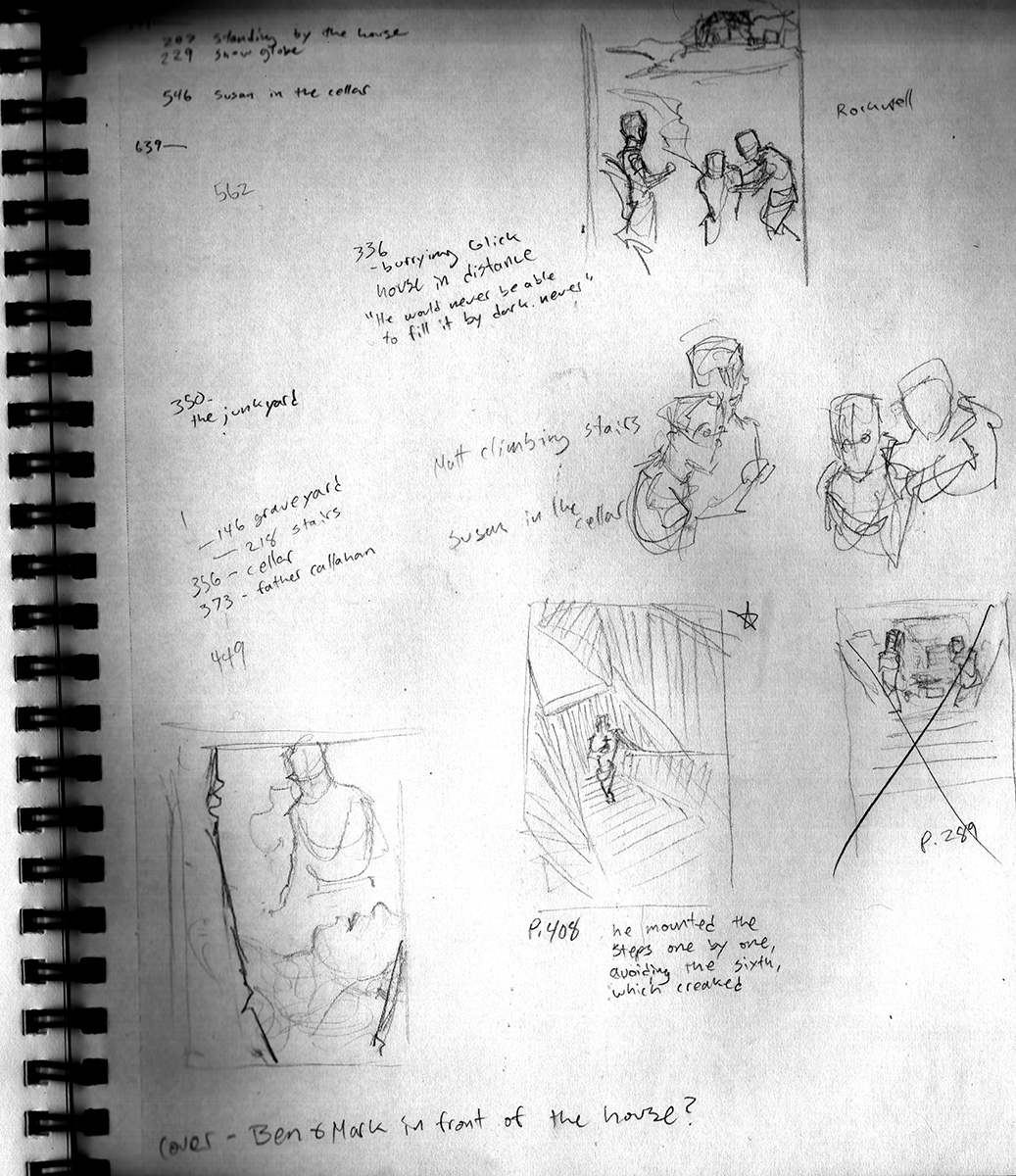
I totally agree with you, process is an important part of drawing, mainly because we learn at the same time as we do art.
not so long ago i bought a DVD from james gurney and this guy has a very rich process of work.
From little sculpture to final composition, every part of is path is interesting and bring something to the final picture.
Recently i've learn a lot of things by starting each of my sketches with hand drawing (few month ago all my pictures where 100% digital made).
Making little composition sketches and force myself to do things by hand is now an important part of my process.
I think that to much digital drawing make me lazy (because I can always go backward and correct things, so it's easy to go and forget about bases and construction).
It is not that easy to do the same with traditionnal media so it force me to think more about what i should do instead of running into painting like a child ^_^.
P.S: sorry for the mistakes, english is not my mother language.
Great post, what an impressive piece for such a young soul! It was quite shocking realizing that someone as young as my smallest siblings produced such a portrait.
I think process is something that most artists (including me, working on it!) don't really think about as often as they should. Once you realize it, though, it's easy to see how much it can help people improve their pieces. Same thing with studies in general; people confuse “practice” with “study” and tend to focus more on the former. While both are equally important, I think once you have the basic techniques down, study should come first chronologically; otherwise you're just practicing using potentially incorrect information. Many people I know end up just skipping the study step; I'm working on spreading the importance of study. Slapping some wrists!
Out of curiosity, do you use Twitter? I made a Twitter account for a group focused on helping artists through motivation trouble, and I'd like to share helpful posts like this from you and other blogs that I follow. I can easily share a link, but if you already have a Twitter feed, I'd rather retweet it 🙂 If not, that's okay of course. I think Blogspot can automatically post a Tweet when a new blog update is created, but it could just be that I'm using IFTT to do it for me haha… I don't remember.
Either way, I look forward to seeing part 2, as well as more of your posts on other subjects 🙂
This has been soooo helpful! I often get frustrated with my paintings and I feel like no matter what I do and no matter how much I study, I can't find the right colors and harmony for my paintings. It could be because I don't follow a process to plan everything ahead and I just experiment with every piece trying to figure out how to get to a good result… and I am maybe a bit hasty wanting to see the results right away.
I can't wait for you next tutorial to see how to apply these steps into modern tools!
As a very much part time artist I've been getting stuck between step1 and 5 for as many years as I have fingers and toes… sometimes I paint or sculpt but never get to a “final” paining.
I keep hitting that wall of what I see in my mind, what I understand, and what I can do with the tools I use. I think the biggest challenge is time to do the consistent work to build the skill and knowledge to allow my imagination to become a reality on paper and canvas.
Thanks for the post Howard. I plan to print it out and stick on my studio wall.
~Mike
Outstanding article! This was really informative and helpful and I love seeing the process of the two artists. I can't wait for part 2. I'll definitely have to reconsider my own process after reading this, as Johan Grenier I fear digital has made me lazy.
Great article! I always love learning how different people approach there art and what process they go through to get to the final image. I am huge fan of Bouguereau as I know many are, I just have a couple questions about his and Mr Rockwell's process. Is the full size cartoon really necessary? Is it just a starting point to draw over (I assume not) what is its purpose? especially since it seems so different from the final image.
-David
Wonderful post Howard! All the figure/head/hand studies are fabulous. Bouguereau's skin tones and hands are just so amazing. (drool worthy…) Sometimes in this high speed era, it is so good to reconfirm that “the process” really is the quickest, smartest and funnest way to tackle a piece. Slow and methodical is really fast….and besides, most of the juicy fun stuff is in the preliminary work. Now if only I can get that into my thick skull. Thanks!
This is just the advice I needed. My process is haphazard at best. It's time I tried this and got serious about this, thank you. On a broader note Muddy Colors has been killing it with the advice lately. So a big thanks to Dan and all the contributors as well.
I've been coming back to this post a few times today, If I'm reading the timeline right from both artists, it seems that despite all the prep, and also because of it… their vision of the final image didn't come into focus until the final painting. I know it sounds obvious, but the sketches and all the reference, especially in the Normand Rockwell's picture in #2 all seem to show that the artists were still looking for the expressions and emotion they wanted to portray. I tend to circle the wagon[vision] until I find comfort in my concept and then dive in a little closer, gain confidence with a study and dive in again with another study. As noted earlier though, sometimes I can't get out of just circling the wagon and find I have to walk away because I can't articulate my idea or vision. Hope that all makes sense.
Thanks again, Mike
Fantastic article Howard, thanks so much. I've always loved Bouguereau but Rockwell is one of my all time favourites! Just to see that picture of him in the studio with all those studies is so inspiring! I struggle with my confidence in art quite a bit, it helps so much to see what these artists did. It gives you view of a tried and tested pathway, especially in this digital age with so many numerous approaches. Looking forward to your next post. Thanks again Howard.
So interesting.
I always have loved Nymph and Satyr. It is such an impressive academic masterpiece but at the same time i never was a big fan of the women in the background.
I'm always a bit sad that Bourguereau is not that big in France.
Thank you for putting together that article Howard.
Great post. I began implementing a thorough and consistent process a couple months back. Between that and active mental practice ( as described in this excellent and often art-applicable musician blog http://www.bulletproofmusician.com/does-mental-practice-work/) I think I've improved more in the last 6 months than any other year since I started doing art, and I've done less of it, unfortunately, due to having a baby, my day job, and 2 cross-country moves, than any year prior. The only significant difference in my process from the typical, is that I maintain a ~120 slide powerpoint that functions as a giant process and attribute checklist, complete with image examples that I've found are clearest to me. That way if I forget what exactly I mean by edge control, for example, I also have several illustrations there with arrows pointing it out and descriptions of what I want to achieve in my art. I flip through it several times per painting I work on, and I think it keeps me responsible and prevents shortcuts, accidental or intentional. I update it as frequently as I learn something new.
Thanks Mimi. I am on twitter. @howardlyon Thanks for taking the time to reply to my article. Your twitter feed sounds like a great idea for artists!
I am glad that this was helpful. Hopefully part two will be as well! I can relate about being hasty. I have to tell myself to slow down all the time.
Thanks Mike!
Your english is great! I do think that digital tools can let us take shortcuts a little easier than traditional, it is a good thing to keep in mind. Having said that, I am fully in support of using any tool I can to get to the final image and digital tools bring some great benefits.
Just as important to me as the success of an individual painting (and to most artists) is how to improve as an artist over the long run. If a tool or method seems to be holding us back, then it must go or change. So, if you feel the computer has made you a little lax in your methodology, time to change, and for the better! 🙂 Best of luck!
Thank you Kiri, I added some thoughts to Johan's comment that might be of interest. Just my thoughts. Best of luck to you!
Great question about the cartoon. For Rockwell and Bouguereau and so many others, the cartoon was considered necessary. Usually it was much closer to the final. I just happened to find two images where there were some significant differences. If you search out some others, you will find they usually correspond pretty darn close. Today, many artists don't do a cartoon, technically, but they draw right on the canvas, with some real detail. Others still create the cartoon. Donato will photocopy his onto large sheets of paper and fix them to a board and then paint on them. A great example of using modern tech to save time and effort. The work is still put in, but time saving tools are used. I think the cartoon is only considered necessary if you want to work out your painting before starting the final. If you want to explore ideas and make large changes on the fly, then now (and some really talented artists do just that).
Thanks for giving my article a read and for taking the time to respond!
I second that comment about MC recently. So much good information. Believe me when I say it is intimidating to come up with a post. I am glad it is only every two weeks. Unfortunately, I usually follow Greg and Lauren. No pressure!
Thanks for the additional comment Mike. If you get the chance, get the book “Norman Rockwell: Illustrator”. It is a fantastic book, with so much good information on technique and why each stage matters, but also how Rockwell used many different techniques, applied to the same process outlined above. You can literally find the book for 1 penny, plus shipping ($4 total). If you don't have it, get it!
Here is a link to the book on Amazon used for a penny:
http://www.amazon.com/gp/offer-listing/0070252130/ref=sr_1_1_up_1_main_olp?s=books&ie=UTF8&qid=1396757458&sr=1-1&condition=used
Thanks Matt!
Wow! It sounds like you are crazy busy, I am amazed you have been able to do any kind of art. I hope things settle down (though a baby doesn't exactly allow for that :)). It sounds like you are very well organized and active in your improvement. As odd it sounds, I know some artists who have out right told me they aren't interested in improving, but in just making more art. Odd to me. Keep at it when you can!
Thank you and thanks for taking the time to reply. Hopefully Bouguereau will get his due in France as well. I do know that the d'Orsay has picked up a few major works in the last few years in addition to their Venus painting. Hopefully that is a sign of more to come!
Personally I think the book “Norman Rockwell on Norman Rockwell” is THE book to have. He shows how his thumbnails are really badly drawn. This is how he drew out of his head for ideas.
http://i1107.photobucket.com/albums/h387/wombat236/Rockwell3_zps728f3eb6.jpg
(the pic is blurry, but you get the idea)
Thank you for this post! I didn't think about practicing the hard parts like fabric. Alex was a lot of fun to teach. He really resisted measuring and such but when we buckled down and went to work it just flowed. 9 year old boys are fun to teach!
I can't imagine being at a place where I wouldn't want to improve!
As to the modern tools I use. I use photoshop to compose and adjust color, I print my own photos and cut and paste to also help compose, and I use calipers and a color checker from Mark carder.
Great article, thanks! I always enjoyed process-based art like print-making and photography and working through each step of preparation and execution. It will be exciting to establish more of a process around painting. Thanks for the inspiration!
Thank you for a great article! I look forward to part 2. One thing I noticed, I love the drawing that Bougeuereau did right before the final painting, for the incredible facial expressions that did not make it into the final, for some reason..
One thing I've learned about process over the years, thumbnails ALWAYS help! The more the better!
I remember when I was first starting to mess around with painting, I was impatient and my process consisted of 1. do a random sketch with no planning, 2. jump straight to the painting. The results… left much to be desired. Composition, color and value were aaaaaaallll over the place. So were glaring mistakes.
Over the years I've been gradually adding more steps to the process, and I swear every time I add a step the results are better. There must be something in that.
My current process seems to be approaching the “classical” process:
1. Thumbnails thumbnails thumbnails!
2. Rough sketch(es)
3. Life studies, or digging up ref if there's no live source/I'm strapped for time
4. Tight final drawing based on studies and ref (I used to do these full size until I got a projector; now I do them as big as I'm comfortable with and project to full size.)
5. Transfer final drawing, and paint!
Thanks for sharing Gwen!
That is interesting, but I do like the more graceful poses that ended up in the final. Especially the foreground figure on the right.
Someday, I am going to have a little press and do copper etching. Someday.
Thanks! Now I have to save up a little to get that book. Dang, hard to find a copy in good shape for less than $100. The book look sambaing though! Thanks for sharing!
Thank you for an inspiring and informative article! I've been having almost constant, unarticulated thoughts about how to “cheat” my way to better results, but if all the greats did it, I won't think of it as cheating any more or have a bad consciousness for entertaining the thoughts. I am also a wannabe composer and songwriter, and I can clearly see how focusing on the best process could finally lead me to a place where my musical sketches finally get finished
Bookmarked!
But lots of images are offline. :-/
See if it is fixed now. Not sure what happened, but I uploaded the images again. Thanks!
Thank you!
Part 2 is dead